Don't miss interesting news

In 2025, a C-Level leader’s personal brand is not only a tool for self-presentation, but also a key factor in trusting his company, attracting partners, and shaping corporate culture. Below you will find proven strategies, international cases, and honest opinions from one of the leaders in the field. For the sake of clarity and a sense of the specifics of our market, we learned interesting information about the experience of building a personal brand from a C-level representative. Dmytro Marievsky, Head of the Growe Partners affiliate program, shared his insights on this path.
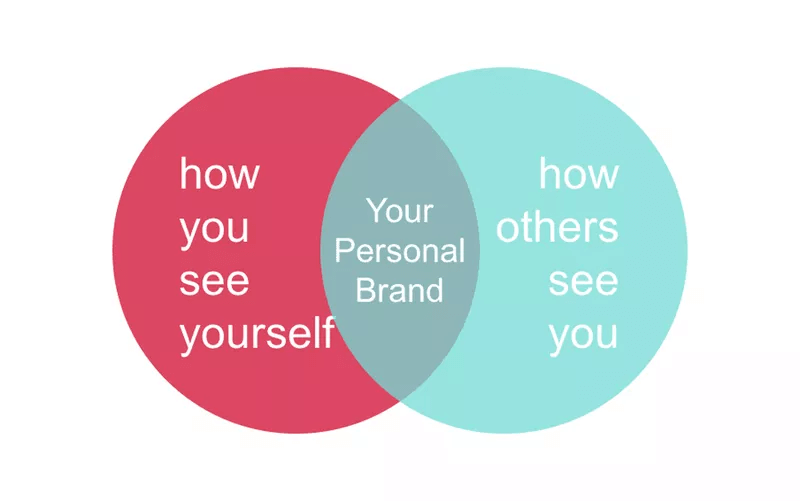
Personal branding for executives is more complicated than giving speeches at conferences from time to time, because it is almost a daily work online to make people believe in you and support you. It is a non-stop story that you tell through your activities and the broadcast of them and your thoughts on social media. In 2025, it is important not only to demonstrate professionalism, but also to be genuine, human and open on social media.
Creating a personal brand begins with an awareness of your own values and strengths. After all, this is not a one-time project, but systematic work on creating a positive image. Talk about yourself in a way that is interesting and inspiring. This will allow you not only to maintain a constant interest in your activities, but also to attract new partners and customers, cool acquaintances who will then “unfold.”
One of the clear examples of the impact of a personal brand on attracting clients and partners is participation in podcasts, interviews, and other professional events online and offline. Dmytro Mariievskyi recalls: “Recently, I have started to appear more on various voyages, podcasts and interviews. I have already started to notice that after the broadcasts, new partners recognize me and come up to meet me more often.” Participation in Conversion Conf in Warsaw proved to be especially effective, where, thanks to his recognition, he immediately established contact with a new potential partner, which significantly accelerated the start of cooperation.
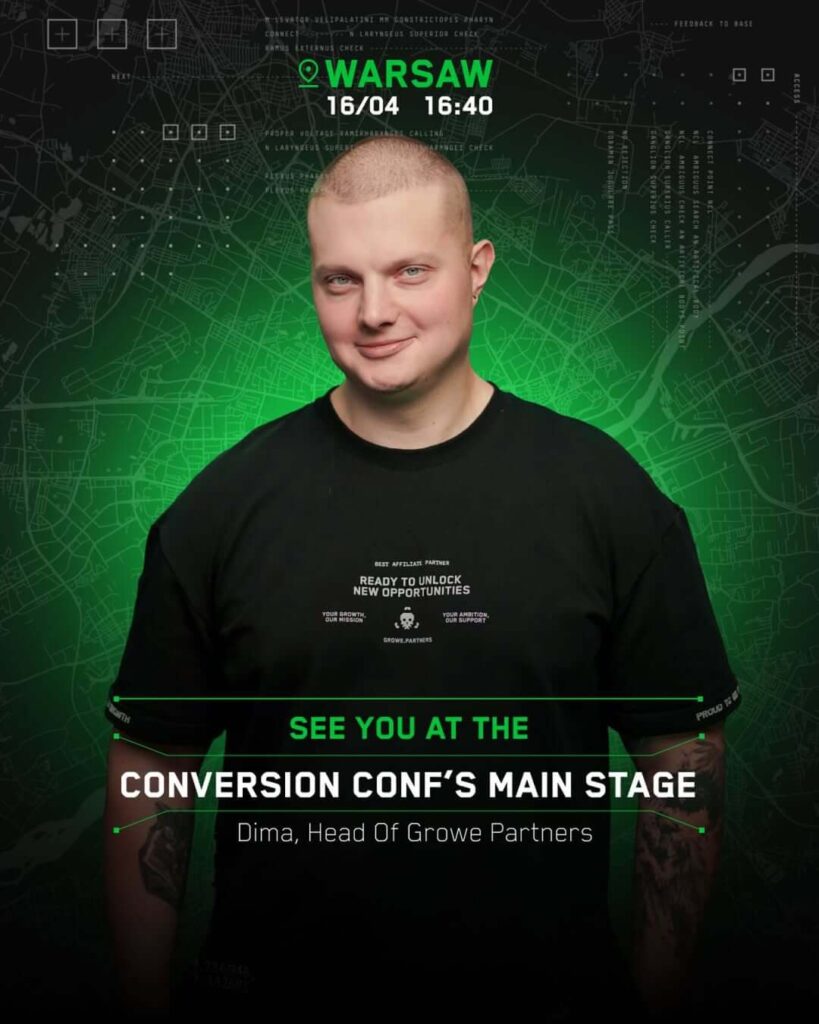
In affiliate marketing, a personal brand can play a crucial role in building trust. According to Dmytro: “A personal brand helps to stay visible. Partners know who is behind the company and trust it easier in negotiations.” The main advantages of this approach are recognition, quick access to new contacts, and easier building of long-term relationships. After all, when a person is quite media-savvy, there is more trust in him or her, and subconsciously the partner knows that he or she cares about reputation, which means there will be fewer problems. However, there are also challenges: creating content takes time, and you have to learn to balance being busy “at work” with making time for your other job, your own social media. Setting boundaries and scheduling time to avoid burnout is a must.
Dmytro admits that at first he was comfortable staying “in the shadows,” but later on, publicity became an integral part of his professional life and brought many benefits. According to him, media accelerates development and helps establish new partnerships. At the same time, it is important to maintain a balance between media and work: sometimes you want to disappear from the information space completely, but the path you have already chosen obliges you to maintain visibility. It is worth taking care of your mental state to avoid sudden “falls” from publicity.
A leader’s personal brand should reflect the company’s values. When the leader and the company speak with one voice, partners see consistency and reliability.
To create harmony between a leader’s personal brand and corporate culture, it is important to identify common values, such as openness, responsibility, and result orientation. At the same time, it is also necessary to preserve your individual style as a person so as not to lose your personal authenticity within the corporate brand. It means not talking about business 100% of the time, but also about other topics or areas of life. Such a balance between personal and corporate image helps a C-level leader to look not like an “artificially created” person for the company, but also an interesting personality.
Dmytro recommends starting with understanding your audience and formulating an expert niche. “The first step is to understand your audience and formulate your expert niche. Start with self-analysis: what are your key strengths and skills, what can you give to beginners and colleagues, what is your mission? This will help you form an authentic and consistent image. Understanding your role and being able to communicate it to the audience helps to create a solid foundation for your personal brand.
Next, you should share your knowledge through articles, short videos, or posts, participate in events, and speak at professional events. The key is to be systematic: it is better to publish regularly, at least once a week, than to make single posts once a month.

For those who are just starting to build a personal brand, Dmytro advises to start with real experience. You shouldn’t try to repeat someone else’s success right away, but rather demonstrate your expertise through your own cases. Regularity of publications is the basis of trust. Even if you are just starting out, use non-standard headlines and formats to attract attention. Joint projects and collaborations can also be a starting point for your brand, as they allow you to combine different expertise and attract new audiences.
You also need to have an understanding of your audience’s needs and expectations, which will allow you to create relevant content and choose the right communication channels. It means not just knowing who your subscribers are, but also why they read you, what makes you “catch” them. Use surveys and feedback to better understand their needs. In general, communication with the target audience is very important.
Choose platforms where your audience is active: Telegram, LinkedIn, other social networks, professional conferences, podcasts.
Over time, Dmitry Marievsky noticed that Telegram has become the best platform for him to run his personal brand. After experimenting with different formats, he came to the conclusion that it is short cases and practical insights on this platform that resonate with his audience. Thanks to this approach, the brand grows organically, without radical changes and a lot of resources. Telegram allows you to quickly share news and findings while maintaining a lively communication format.
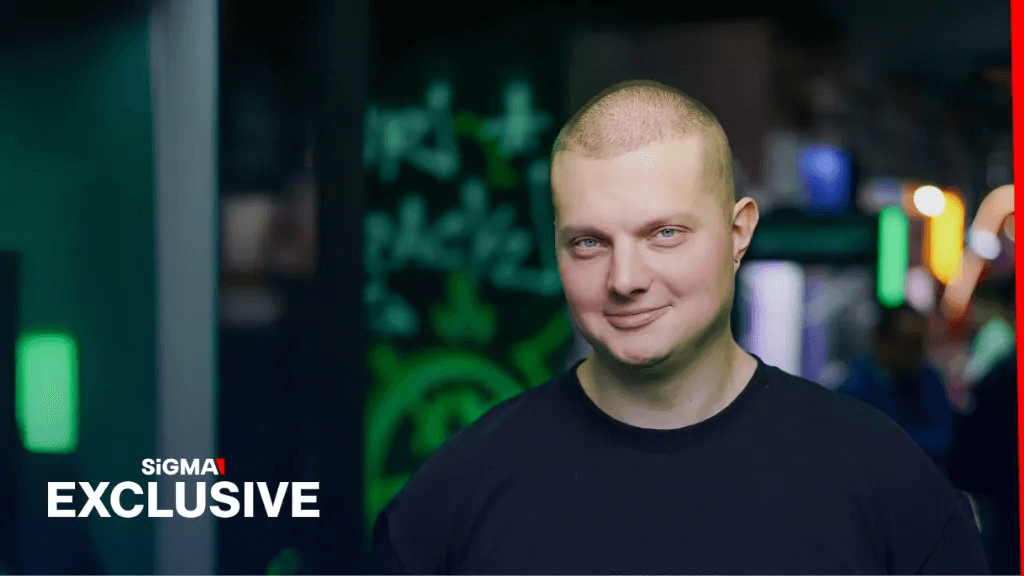
Content should reflect your expertise, values, and unique style. Tell stories, share cases and opinions on relevant topics.
Create a content plan that outlines the topics and format of each piece of content – this will help maintain consistency and always know “what to write about.” Creating a personal brand for C-Level in an affiliate program starts with understanding your audience and formulating an expert niche. It is important to clearly define what problems you solve and what values you are ready to broadcast. Experience and desire have a magical power, so we believe that you will succeed. The main thing is not to forget about the fine line between annoying self-promotion and strategic storytelling.
From Dmytro’s point of view, the optimal balance of content consists of 80% of professional cases and 20% of personal stories and opinions. This allows you to show yourself not only as an expert, but also as a person with your own interests and values. This approach helps to build trust and maintain a keen interest in the personal brand.
It is also important to have a visual identity in this digital world. It can be a color palette or a unique style of content presentation, jokes, catchphrases. And remember that the harmony between your personal brand and the company’s brand should create a sense of integrity.
Dmytro Mariievskyi identifies several main mistakes to avoid. First, you shouldn’t create content “just for the sake of it,” because each post should have some value, not “watery” or dry text, it’s all noticeable. Secondly, chaotic posts do not allow the audience to understand the sequence of thoughts and ideas, so you need to keep an eye on this and not let your target audience forget what you are talking about. Also, don’t copy someone else’s style or format – it’s important to be yourself. And most importantly, don’t promise what you can’t deliver, because trust is built on responsibility for your words and honesty.
Gather feedback, analyze statistics, and study trends to stay on top of things. Sometimes changes in the market require updating your brand strategy or just making small, modern innovations. Staying in touch with your audience is important, but it’s even more important to understand how your brand is perceived and what needs to be improved.
There are many successful examples of executives creating a trusted personal brand through sincere broadcasting of their business life.
One such example is Gary Vaynerchuk, known as Gary Vee, who is not just a businessman, but a whole media personality. He is always one step ahead, experimenting with content and creating new ideas wherever he goes. His secret is authenticity and sincerity in everything he does. As the founder of VaynerMedia and a popular business motivator, Gary actively uses social media to share his expertise, success stories, and even failures. But depending on the platform, Gary takes on different roles.
On YouTube and LinkedIn, he is a serious mentor and business guru. On YouTube, he publishes long interviews, motivational speeches, and reflections on personal brand development. The DailyVee and The #AskGaryVee Show series show his workday and answers to questions from subscribers. On LinkedIn, he focuses on professional topics: leadership, business strategies, and advice for entrepreneurs. This is a place where his content is always insightful and informative.
Instagram and TikTok – Crazy experimenter. On Instagram, Gary shows more of his creative side. He shares quotes, reels, and highlights from his life. Here you can often see characters from his VeeFriends project – unique NFT cards that embody values like optimism and patience. On TikTok, he is completely different – dynamic, funny, and straightforward. Here, Gary is not afraid to experiment with formats and show himself as he is: sincere, direct, and a little bit outrageous.
VeeFriends is entertainment content for young people. These are not just collectible cards, but a whole world of characters, each with a unique story. The project combines comics, NFT, and even an animated series. Gary shows that business and entertainment can go hand in hand.
Thus, Gary Vaynerchuk skillfully balances seriousness and creativity. He is not afraid to be different: a mentor on LinkedIn, a motivator on YouTube, a comic creator on VeeFriends, and a free creator on TikTok.

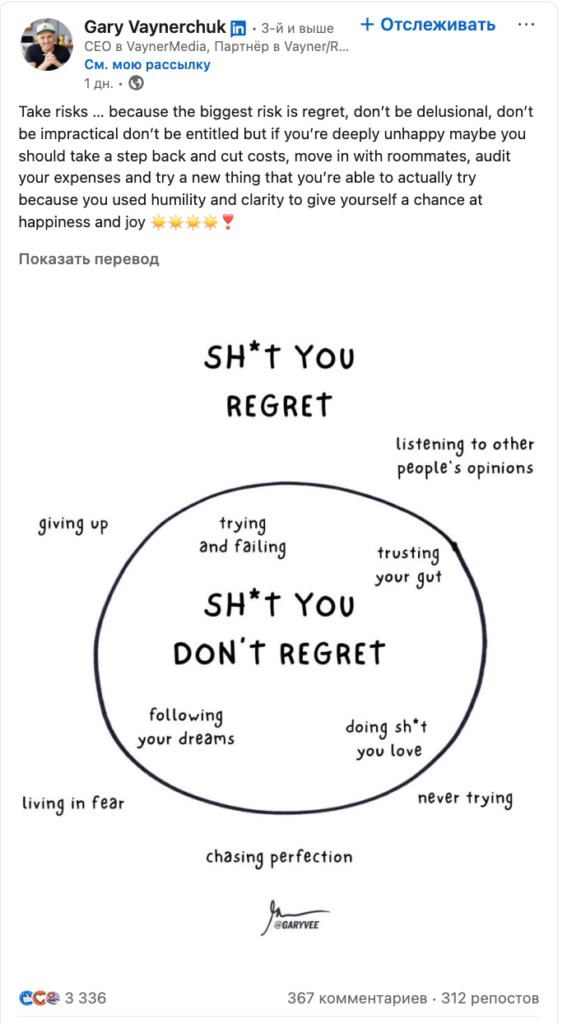
Another example: Brian Chesky, co-founder and CEO of Airbnb, has built a personal brand based on transparency and engagement, and highlighting challenges. During the COVID-19 crisis, he communicated openly with employees and users, providing up-to-date information about the crisis and ways to overcome it. This helped not only to maintain trust in the company but also to demonstrate the brand’s humanity. Chesky’s approach to communication through social media and public speaking allowed Airbnb not only to maintain customer loyalty but also to expand its user base in a difficult time for the industry.

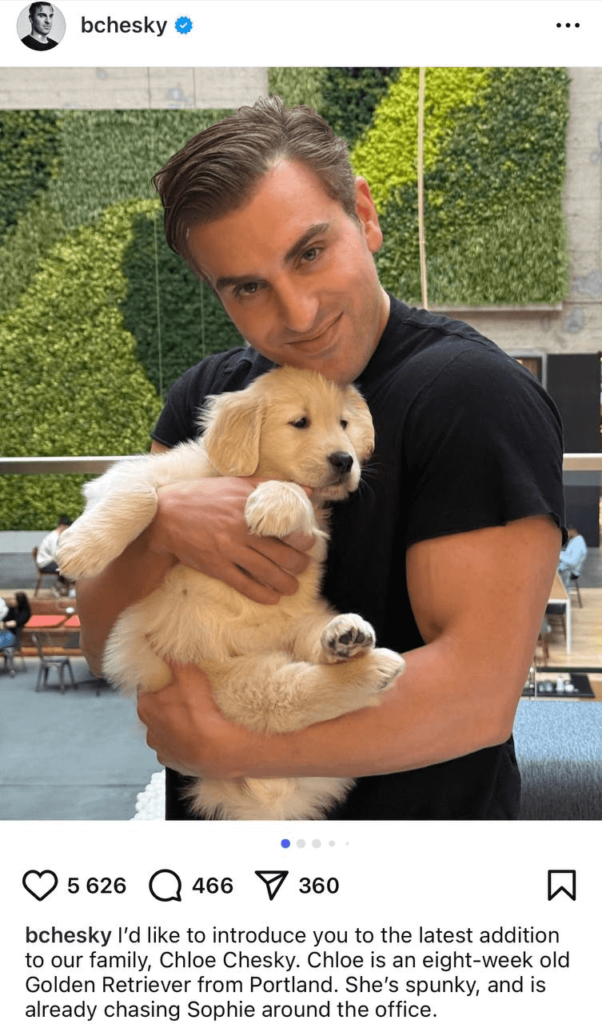
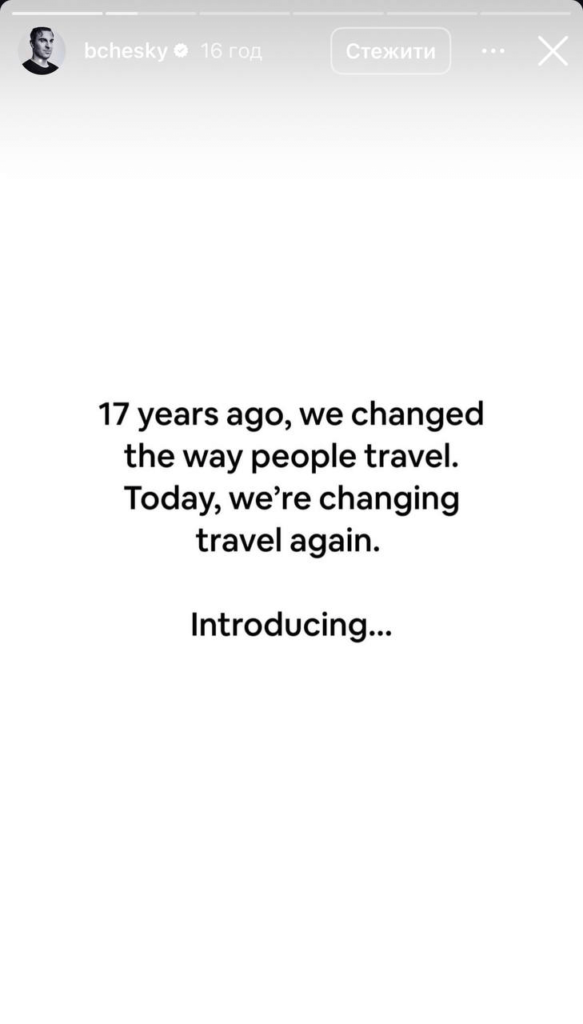
It’s especially cool when C-Level leaders have multiple platforms to build their personal brand, such as one of these:
Building a personal brand for a C-Level leader is not a “just something that will happen”, but a strategic process that requires clear planning, authenticity, and a lot of resources. If earlier the publicity of a leader was considered something secondary, today it is an important and powerful tool for attracting partners, clients and strengthening the corporate image. Leaders who are not afraid to show their humanity and be open to new challenges gain more support and influence, and this is a fact. It’s up to you to develop in this area, but the result is worth it, even if it’s not quick and easy. And we hope that after reading this article, there will be even more cool and manifested C-level personal brands in the field.